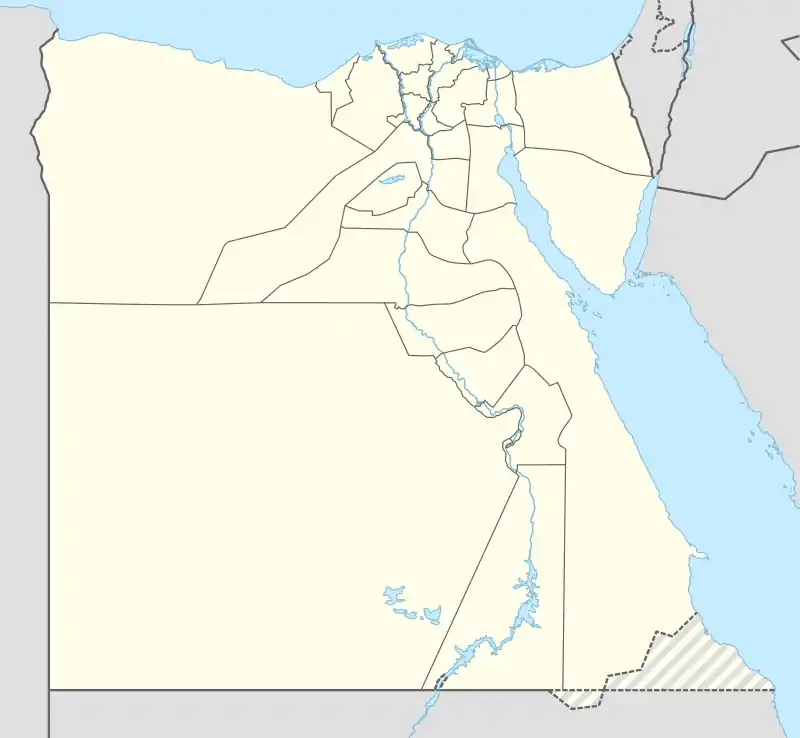KV31
Tomb KV31 is located in the Valley of the Kings, in Egypt. During the archaeological dig seasons of 2010–2012, the scientific project "The University of Basel Kings’ Valley Project" began a study of several tombs, including Tomb KV 31. The tomb was mapped for the first time; it consists of a shaft (A), a chamber (B) and two additional chambers (C, D) opening from chamber B. Within the tomb they found five mummies, two women and three males, all between the ages of 18 and 30. As there are no names with the mummies, each was given a designation based upon the room they were found in (room C or room D).[1]
- Mummy C1 is a female, 18–25 years old, short silky black hair. 159 cm long (5'2")
- Mummy C2 is likely to be male with long braided hair, 20–25 years old. 165 cm long (5'4")
- Mummy C3 is likely to be male. His headless body was found with his arms crossed over his chest in the manner of a King, 18–25 years old. 175 cm long (5'8")
- Mummy C4 is male. His hair was short save for longer strands on the right side, suggesting the side-lock of youth (worn by princes). 160 cm (5'2") No age was listed, but the final molars (wisdom teeth) had erupted.
- Mummy D4 is possibly female, although this is very uncertain. Only most of her skull, one leg and part of her pelvis remain. They estimate a height of 155 cm (5'1"), and an age range of 20-30 based on teeth. The hair on her head was short and red.
| KV31 | |||
|---|---|---|---|
| Burial site of Unknown | |||
 KV31 | |||
| Coordinates | 25°44′18.8″N 32°36′02.0″E | ||
| Location | East Valley of the Kings | ||
| Discovered | October 1817 | ||
| Excavated by | Giovanni Belzoni | ||
Each of these mummies showed signs of multiple fractures, but this may have been the work of tomb robbers, both ancient and modern. The link to this study, x-rays of the mummies, detailed reports of the findings, and the findings of the archaeologists can be found in the report link below. Included is also a link to "University of Basel King's Valley Project".
The report suggests that these mummies were all interred together, and that they might be family members of Thutmose III based on pottery and embalming techniques.
References
- Rühli, Frank; Ikram, Salima; Bickel, Susanne (2015). "New Ancient Egyptian Human Mummies from the Valley of the Kings, Luxor: Anthropological, Radiological, and Egyptological Investigations". BioMed Research International. Retrieved 2020-03-11.
External links
- Theban Mapping Project: KV31 - Includes detailed maps of most of the tombs.
- https://web.archive.org/web/20170204170942/http://www.hindawi.com/journals/bmri/2015/530362/
- https://web.archive.org/web/20170802212209/https://aegyptologie.unibas.ch/forschung/projekte/university-of-basel-kings-valley-project/